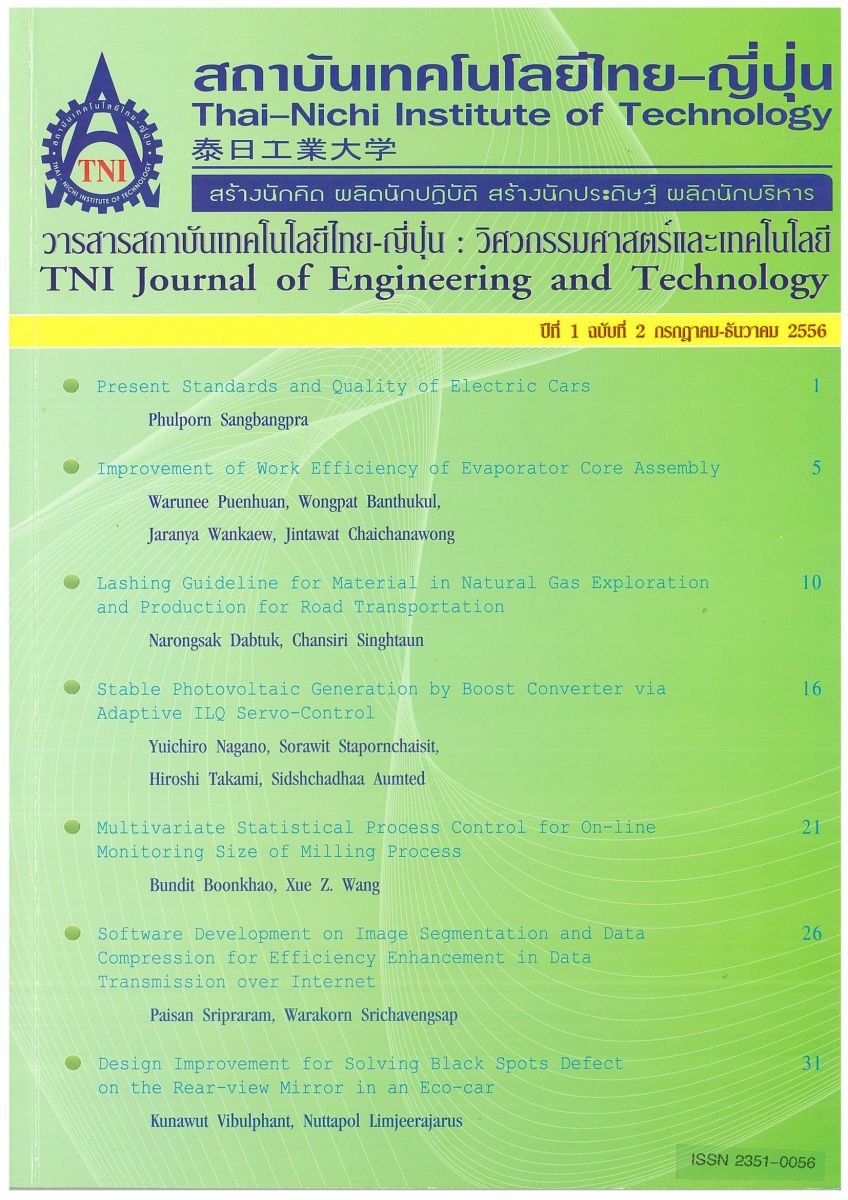Design Improvement for Solving Black Spots Defect on the Rear-view Mirror in an Eco–car
Main Article Content
Abstract
Since launched to the domestic market in 2010, Eco-cars have been phenomenon and have become popular among car users in Thailand due to their inexpensive cost and low fuel consumption. However, a suspicion corresponded to the Eco-car’s low cost, which is always questioned by the customers, is the quality of their components. This research focuses on the investigation and solution of black spots defect on the rear-view mirror in a model of Eco-car, which reveals at about 2 months after being sold. The results from initial inspection on the physical structure of the rear-view mirror and the appearance of the black spots defect, and Energy-dispersive X-ray spectroscopy (EDX) technique confirmed that the root cause of the defect is the use of Ethylene propylene diene monomer (EPDM) foam as the support of the mirror plate. Sulfur, a composition in EPDM foam, reacted with silver coated on the back of the mirror plate and formed silver sulfide (Ag2S), a black-colored compound. In order to solve the problem, a new design of the rear-view mirror was proposed in which EPDM foams were replaced by plastic ribs as the mirror plate’s support. The success in the improvement has been proved that there is no claim of the modified rear-view mirrors in 4 months after the implementation of the new design.
Article Details
Article Accepting Policy
The editorial board of Thai-Nichi Institute of Technology is pleased to receive articles from lecturers and experts in the fields of engineering and technology written in Thai or English. The academic work submitted for publication must not be published in any other publication before and must not be under consideration of other journal submissions. Therefore, those interested in participating in the dissemination of work and knowledge can submit their article to the editorial board for further submission to the screening committee to consider publishing in the journal. The articles that can be published include solely research articles. Interested persons can prepare their articles by reviewing recommendations for article authors.
Copyright infringement is solely the responsibility of the author(s) of the article. Articles that have been published must be screened and reviewed for quality from qualified experts approved by the editorial board.
The text that appears within each article published in this research journal is a personal opinion of each author, nothing related to Thai-Nichi Institute of Technology, and other faculty members in the institution in any way. Responsibilities and accuracy for the content of each article are owned by each author. If there is any mistake, each author will be responsible for his/her own article(s).
The editorial board reserves the right not to bring any content, views or comments of articles in the Journal of Thai-Nichi Institute of Technology to publish before receiving permission from the authorized author(s) in writing. The published work is the copyright of the Journal of Thai-Nichi Institute of Technology.
References
The Thailand Board of Investment. BOI drives a eco-car forward. THAILAND INVESTMENT REVIEW 2007;17:3.
Sarang Gopalakrishnan. Vulcanization and the Properties of Rubber. University of Illinois paper 2007.
ไพฑูรย์ หมายมั่นสมสุข. การวิเคราะห์ซัลไฟด์ในน้ำ. สำนักวิจัยและพัฒนาสิ่งแวดล้อมโรงงาน :11-5.
Douglas Vaughan. ENERGY-DISPERSIVE X-RAY MICROANALYSIS. NORAN Instruments:34-49.
M. van Duin. Chemistry of EPDM Cross-Link. Elastomers and Plastics 2009:151-2.


